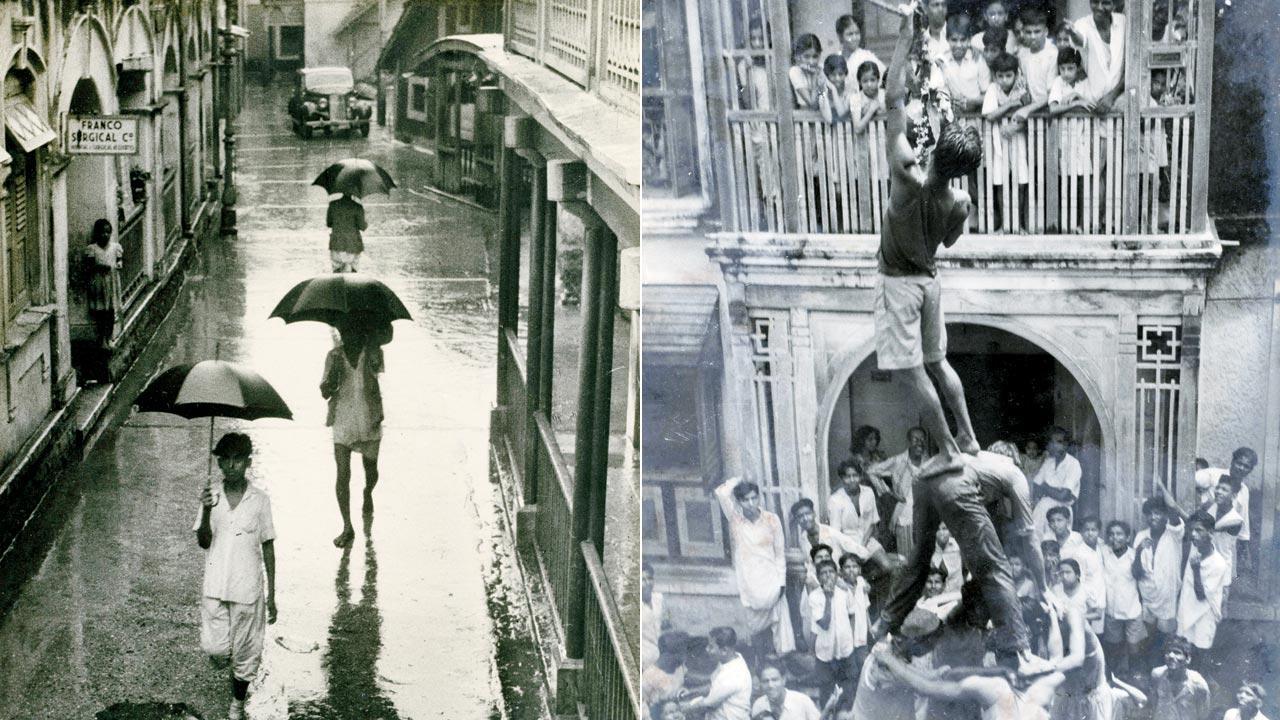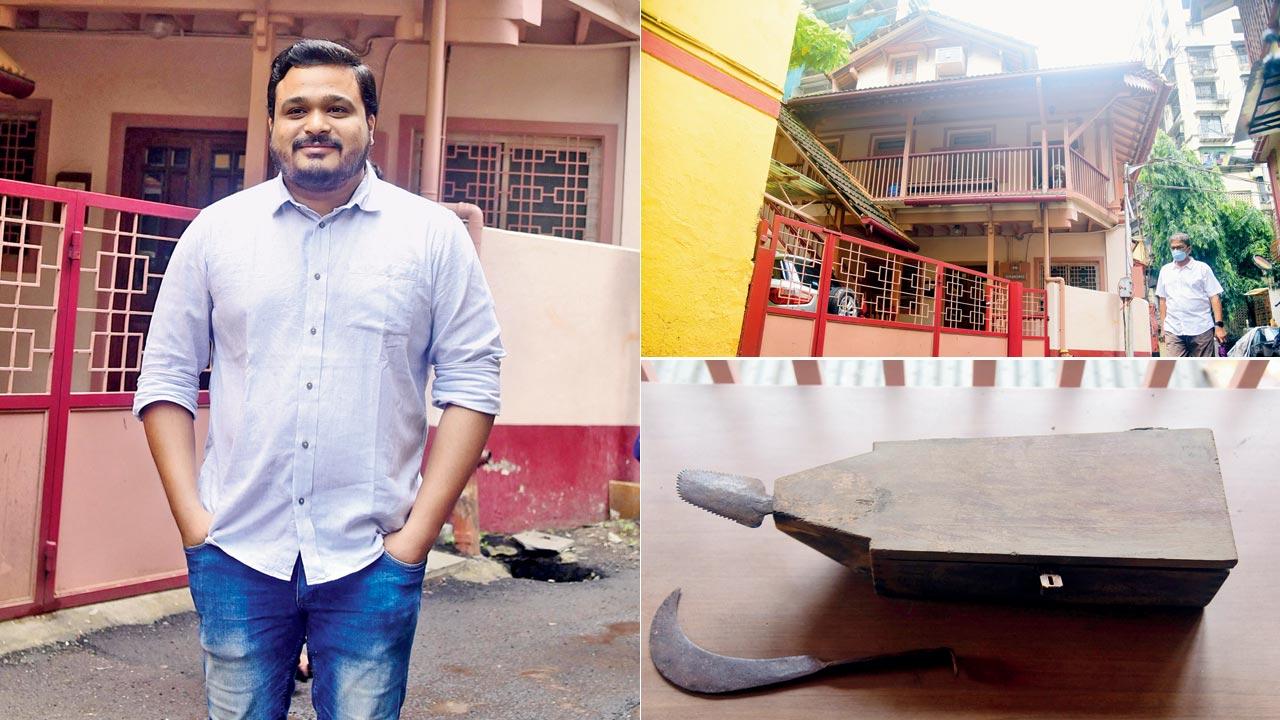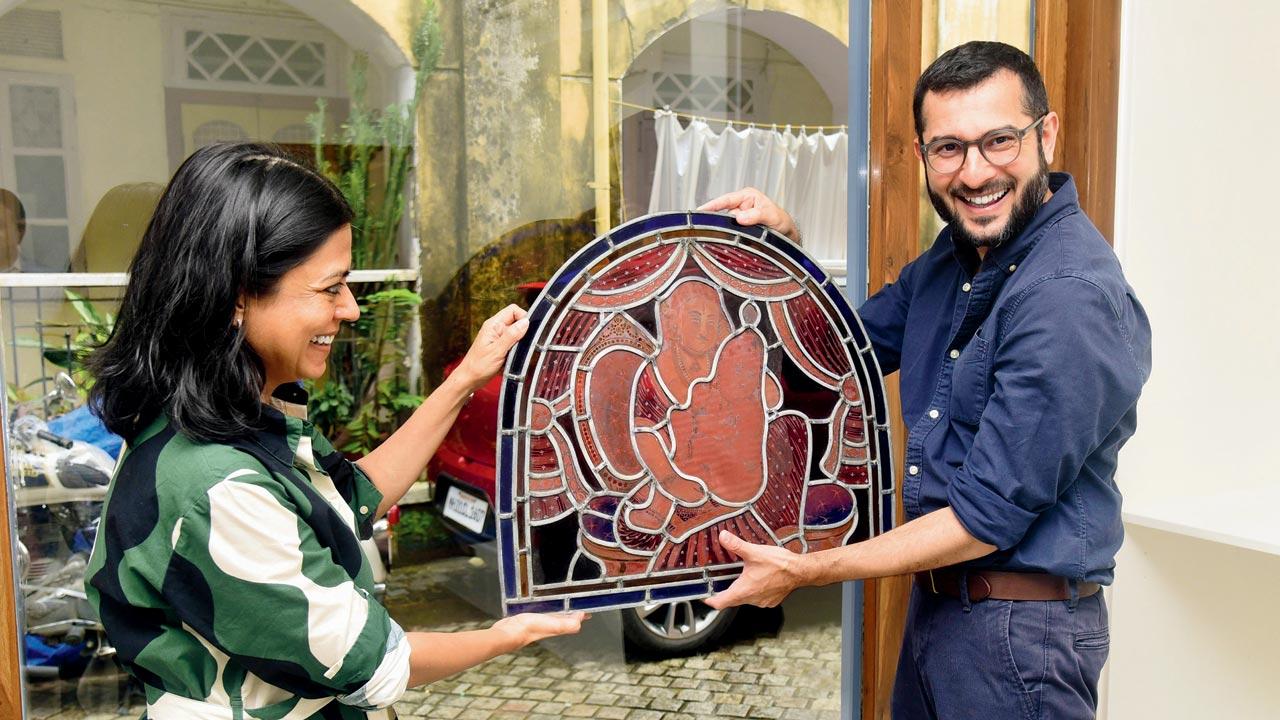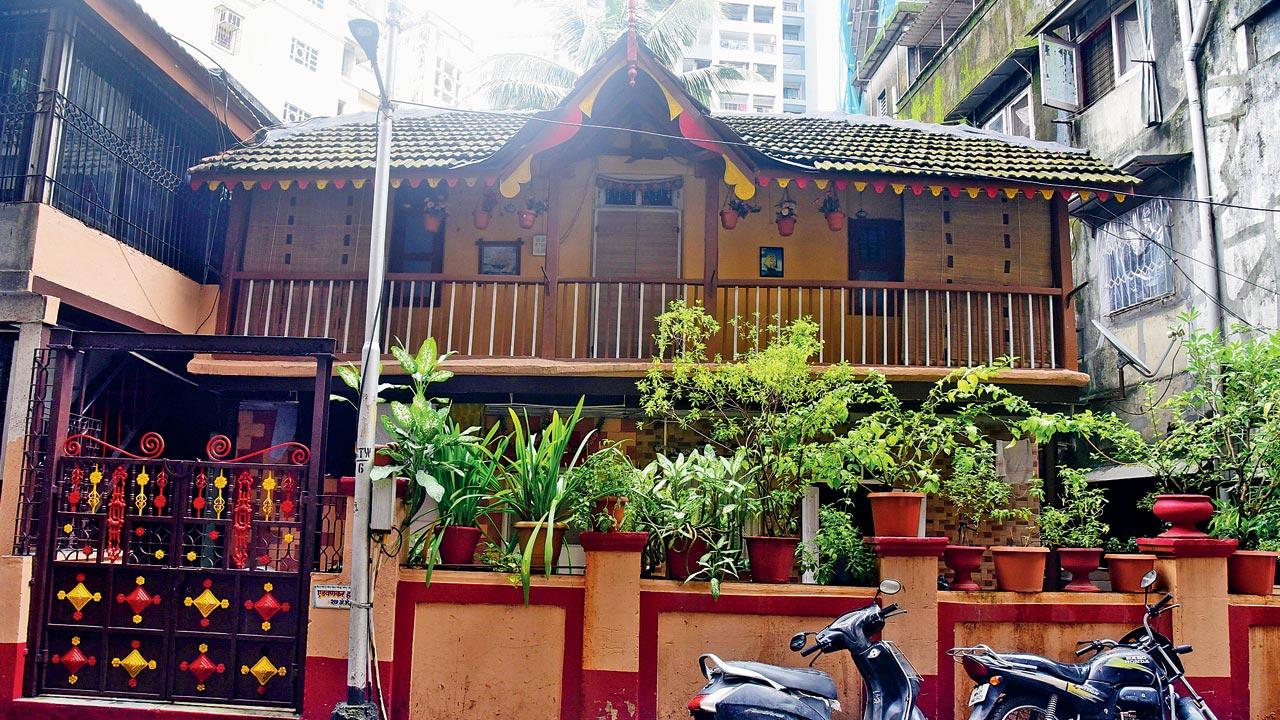Soak in the layered histories of this heritage precinct at an exhibition that blends street photography, culinary stories, architecture, art and product design

Pics/Shadab Khan
Street smart
ADVERTISEMENT
Through the Ferreira House, one encounters the evocative prints of photojournalist Bruno Ferreira, who documented Bombay’s streets; (right) untitled (streetscape outside 47-A Khotachi Wadi); (right) untitled (acrobats near Sai Niwas, Khotachi Wadi), circa 1950s, vintage photographic prints. PICS COURTESY/Bruno Ferreira Archive; while his photographs are a portal into the wadi’s past, current resident Keenan Pereira has captured the contemporary streetscape that will be on display at the exhibition too
Food: Language of love

One of the houses that offer a window into the neighbourhood’s culinary past is fourth-generation resident, academic and curator André Baptista’s; Baptista House. His ancestors moved into Khotachi Wadi in the 1890s. By displaying traditional EI pots, pans, cutlery and other cooking equipment that have been passed down generations in his family since the 1930s and ’40s, he hopes to stir up a conversation around EI cuisine, and how smell and taste conjure identity. On Saturday, for those who hope to taste this “love language of food”, there’s a pop-up at The Girgaum Catholic Club down the road, where aunties of the wadi will whip up treats; morli, a kitchen tool from the Baptista House.
Art of the wadi

Edwankar House — whose late owner was a goldsmith who trained at Sir JJ School of Art — offers the opportunity to look into the art schools in the beginning of the 20th century and the influence of art and aesthetics, through the popular forms of lithography and stained glass windows

Tara Lal and Mortimer Chatterjee hold up a stained glass window made by students of the Government School of Industrial Arts, Madras, early 20th century, reputed to have been commissioned for the Maharaja of Travancore. object/Chatterjee & Lal
A sense of loss lingers in the air when you pass by 28, Fernandes House in Khotachi Wadi. Wilting flowers and wrinkled decorations on its façade fail to mask the scars of tarpaulin-covered demolitions. In the past two months, residents of the 200-year-old heritage hamlet have been battling with the powers that be over the redevelopment of the 90-year-old building. But this isn’t the first messy redevelopment in the village, that traces its origin to the 19th century, when East Indians (EI) from Bombay and beyond moved into the locality that has since housed Goans, Mangaloreans and Maharashtrians, among others. Academic and fourth-generation resident André Baptista points out that when Burmese teak doors or ornate load-bearing structures, hundreds of years old, are carted away, a part of the wadi’s identity is chipped away. “We welcome people of all backgrounds.
All we ask is that when you buy a property here, you realise you’re moving into a village. Yes, there’s mutual exclusivity here, but in that there’s coexistence and respect — reflected in our streets and architecture, which we want to preserve,” he shares.
It is only fitting then that Fernandes House is among the houses that feature in This Ground, Plus: Khotachi Wadi in Design Context, an exhibition at the hamlet’s months-old gallery, 47-A. It is curated by Baptista and C&L Design, and will trace the layered histories of Khotachi Wadi. The gallery is in a flurry of activity when we drop by, with bubble-wrapped photographs and artworks offering a peek into the wadi’s past. Mortimer Chatterjee, co-founder, Chatterjee & Lal, shares that there’s a polemical side to the show. “There’s been so much destruction here in the past 15 years. We will highlight that through newspaper headlines. We’re also trying to use specific houses in the area as windows into different parts of design histories,” he tells us.
The houses include 47-A, Crasto House; 28, Fernandes House; 47G, Ferreira House; 38, Ferreira House; 27, Baptista House; 14, Worlikar House; and 27AA, Edwankar House. Allied to them are photographs by residents old and new, maps, speculative artworks from architect Robert Stephens’ Bombay Imagined, items of family history, lithographs from Raja Ravi Varma press, and more, which will help contextualise Khotachi Wadi in the present, through the stories and voices of residents and the big ideas that shaped Mumbai. “There’ll also be an audio element that will lead visitors in, so you get snippets of sounds that one can hear here,” Chatterjee informs us.
The curators plan to host walkthroughs and discussions with culinary anthropologists and historians. There’s also a food pop-up in store. The threat of losing its identity still looms large, but for now, Khotachi Wadi will put up a ‘feasty’ fight.
From July 23, 5.30 pm (preview) to September 9, 11 am to 7 pm (from July 24)
At 47-A, Khotachi Wadi, Girgaum.
Free
 Subscribe today by clicking the link and stay updated with the latest news!" Click here!
Subscribe today by clicking the link and stay updated with the latest news!" Click here!








